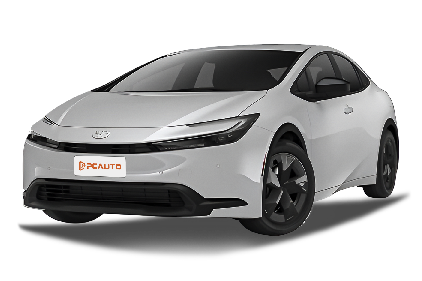Q
How to Test Toyota Prius Hybrid Battery
To test the health status of the Toyota Prius hybrid battery, several methods can be used for preliminary inspection. Firstly, the OBD-II diagnostic tool is used to read the voltage data of the battery module, ensuring that the voltage of each module is balanced (usually around 7.2V). If the voltage difference of individual modules exceeds 0.5V, it may indicate aging problems. Secondly, observe the hybrid system warning light on the dashboard or check the battery charging and discharging efficiency on the on-board energy monitoring screen. Abnormal fluctuations may indicate a decrease in battery performance. In addition, when the vehicle is started, turn on the air conditioning and switch to pure electric mode to test whether the battery can continue to drive the vehicle for 5-10 minutes (depending on the battery capacity). If it frequently switches to the engine, further testing is needed. For Malaysian users, the humid and hot climate may accelerate the evaporation of battery electrolyte or corrosion of terminals. It is recommended to regularly check whether the battery cooling fan is blocked and avoid long-term parking that may cause deep discharge of the battery. If a more accurate assessment is needed, you can contact a Toyota authorized service center for battery capacity testing or internal resistance analysis. The lifespan of hybrid batteries is usually 8-10 years or 150000 to 200000 kilometers, but the actual lifespan is greatly affected by driving habits and maintenance. Reasonable use can extend their effectiveness.
Special Disclaimer: This content is published by users and does not represent the views or position of PCauto.
Related Q&A
Q
Can you jump a 2023 Prius?
Yes, the 2023 Toyota Prius can be jump-started to restore power. However, you need to pay attention to some key steps to ensure safety. This vehicle is equipped with a hybrid system. Its 12V auxiliary battery (usually located in the trunk or under the rear seats) is used to start the vehicle's electronic system, not the drive motor. When jump-starting, you first need to find the positive and negative terminals of the 12V battery (some models may have dedicated jump-start points). Use standard jump-start cables to connect to the battery of another vehicle or an external power source. Start the rescue vehicle and maintain its engine speed to charge the battery. Once the Prius dashboard is powered on, you can try to start the car. After the hybrid system starts, it will automatically charge the 12V battery. The hot and humid climate in Malaysia may accelerate battery aging. It is recommended to regularly check the battery status. If the battery frequently runs out of power, it may indicate that the battery life is coming to an end or there is a parasitic discharge problem in the vehicle, and timely maintenance is required. It's worth noting that the 12V battery capacity of hybrid models is usually smaller than that of traditional fuel-powered vehicles. Therefore, they are more susceptible to the impact of long-term parking or leaving the lights on. It is recommended that car owners carry a portable emergency power supply with them to handle unexpected situations.
Q
Is the Prius 2023 self-charging?
Yes, the 2023 Toyota Prius is a "self-charging" Hybrid Electric Vehicle (HEV). It charges its battery through the kinetic energy recovery system during vehicle operation and the engine running, without the need for an external power source to plug in. Specifically, the hybrid system of the Prius converts kinetic energy into electrical energy and stores it in the battery when braking or coasting. Meanwhile, the battery is also charged when the engine is running. Therefore, car owners don't need to charge the vehicle additionally like they do with Plug-in Hybrid Electric Vehicles (PHEVs) or Electric Vehicles (EVs). For users in Malaysia, this design of the Prius is very convenient because the local charging infrastructure may not be as well-developed as in some other countries. The self-charging hybrid vehicle can not only enjoy the energy-saving advantages of electric drive but also avoid the hassle of charging.
In addition, the 2023 Prius performs excellently in terms of fuel economy and emissions, making it very suitable for the urban road conditions in Malaysia, especially in the frequently congested driving environment. It should be noted that although the Prius is a self-charging hybrid vehicle, it cannot travel long distances solely on electricity like a pure electric vehicle. Its electric mode is mainly used for assisting driving and short-distance, low-speed driving.
Q
Do you have to charge the 2023 Prius?
The 2023 Toyota Prius, as a hybrid model, doesn't need to be externally charged like a pure electric vehicle when used in Malaysia. This is because it automatically charges the battery through the kinetic energy recovery system during vehicle operation and the engine's running. This design is highly suitable for Malaysia's driving environment, especially in congested urban traffic, where it can fully demonstrate its energy-saving advantages.
It's worth mentioning that the 2023 Prius actually offers a plug-in hybrid version (Prius Prime). If you choose this version, you need to externally charge it regularly to get a longer pure-electric driving range (about 70 kilometers). This is very practical for daily short-distance commuting and can further reduce fuel consumption.
The Malaysian government currently offers certain tax incentives for hybrid and electric vehicles. So, both the regular hybrid and plug-in hybrid versions are worth considering. Hybrid technology performs stably in tropical climates, and the battery cooling system has been optimized, making it suitable for Malaysia's hot and rainy climate conditions.
If you often drive long distances, the regular hybrid version will be more convenient. However, if you mainly drive in the city and have the conditions for home charging, the plug-in hybrid version will be a more economical and environmentally friendly choice.
Q
How big is the fuel tank on a 2023 Prius?
The fuel tank capacity of the 2023 Toyota Prius is approximately 43 liters. This design balances fuel economy while ensuring sufficient driving range, making it suitable for the daily commuting or long-distance driving needs of Malaysian users. As a representative of hybrid models, the Prius can significantly reduce fuel consumption through its efficient gasoline-electric collaborative system. With a 43-liter fuel tank, it can provide a driving range of about 800 to 900 kilometers under combined driving conditions, which is very suitable for the Malaysian consumer group that faces high oil prices and values environmental protection.
It's worth noting that the fuel tanks of hybrid models are usually smaller than those of pure gasoline vehicles because their electric systems share part of the power demand. Car owners can further optimize fuel consumption by reasonably using the EV all-electric mode. For users who often travel across states, it is recommended to plan the charging routes in combination with the Prius' energy monitoring system. Many shopping malls and gas stations in Malaysia are already equipped with charging facilities, which can fully leverage the energy-saving advantages of hybrid vehicles.
Q
How do I charge my 2023 Prius?
The 2023 Toyota Prius in Malaysia is mainly automatically charged through its hybrid system without the need for external charging. The battery will be automatically charged during driving through brake energy recovery and engine operation, so car owners don't need to take any additional actions. If you're driving the Prius Prime plug-in hybrid version, you can charge it via a household power source or a public charging station. When using household charging, make sure the voltage is stable and a dedicated charging cable is equipped. For public charging, it needs to be compatible with the Type 2 interface. It takes about 2 hours to charge the battery to 80%. It is recommended to regularly check the battery status to ensure its efficiency. Due to the hot climate in Malaysia, it's advisable to avoid long-term exposure to the sun to extend the battery life. Hybrid cars are more fuel-efficient when driving at low speeds in the city, which is suitable for the traffic conditions in Malaysia. For more details on charging, you can refer to the owner's manual or consult a Toyota-authorized service center.
Q
What type of gas does a 2023 Prius take?
The 2023 Toyota Prius in Malaysia is recommended to use RON95 unleaded gasoline. This is the fuel type officially recommended by Toyota for this model, which can ensure the efficient operation of the engine and take fuel economy into account. As a hybrid model, the Prius's Atkinson cycle engine has certain requirements for fuel quality. The octane number of RON95 is suitable for its compression ratio design. Meanwhile, RON95 is widely available at gas stations in Malaysia, making it very convenient to use. It's worth noting that although RON97 has a higher octane number, unless the vehicle specifically requires it, using RON97 won't bring any additional performance or fuel-saving advantages. Instead, it will increase the cost of vehicle use. Car owners in Malaysia also need to pay attention to choosing gas stations with a good reputation to ensure fuel quality and avoid engine carbon deposits or oxygen sensor damage caused by poor-quality gasoline. The maintenance of the battery pack of the hybrid system is also very important. Regular maintenance can extend the battery life. In addition, the hot and humid climate in Malaysia places high demands on the heat dissipation of the hybrid system. It is recommended that car owners regularly check the cooling system as required by the manual.
Q
Does the 2023 Prius have a solar roof?
The 2023 Toyota Prius does offer an optional solar roof configuration in some overseas markets. This technology can use the solar panels on the roof to provide auxiliary charging for the hybrid battery. Meanwhile, it supports powering in-vehicle electrical appliances when the car is parked. However, it should be noted that whether the version introduced in the Malaysian market is equipped with this function should be based on the local Toyota official configuration list.
Solar roof technology has been gradually applied in the new-energy vehicle field in recent years. In addition to Toyota, other brands such as Hyundai and Tesla have also introduced similar designs. Its actual performance is greatly affected by sunlight conditions. In a tropical country like Malaysia, it can theoretically play a better role, but the specific charging efficiency also depends on the area of the photovoltaic panels and the technical solution.
It is recommended that consumers interested in this technology can directly consult Malaysian Toyota dealers to obtain detailed local configurations. At the same time, they can also learn about the adaptation technologies of new-energy vehicles from other brands in tropical climates, such as battery cooling systems or high-temperature protection designs. All these can help better maintain electric and hybrid vehicles in Malaysia's hot and humid environment.
Q
Does a Prius 2023 have a transmission?
The 2023 Toyota Prius is indeed equipped with a transmission system. However, it uses Toyota's unique Electronic Continuously Variable Transmission (ECVT), which is fundamentally different from the mechanical gearboxes of traditional fuel-powered vehicles. The ECVT achieves power distribution through the coordinated operation of the electric motor and the planetary gear set. It doesn't have the fixed gears of a traditional gearbox, so the driving experience is smoother and more efficient. This design is one of the cores of hybrid vehicles, which can intelligently switch between electric-motor drive, engine drive, or hybrid drive modes according to driving conditions, significantly improving fuel economy.
For users in Malaysia, the Prius' ECVT system performs exceptionally well in congested urban roads. It not only reduces the jerks caused by frequent gear-shifting but also lowers fuel consumption through energy recovery. It should be noted that the key points for maintaining a hybrid vehicle lie in the battery pack and the electronic control system. It is recommended to have regular inspections at an authorized service center to ensure the long-term stable operation of the system. Compared with traditional gearboxes, the ECVT has a simpler structure and a lower failure rate. However, if any abnormalities occur, professional technicians with specialized equipment are still required for diagnosis. Other brands, such as Honda's hybrid models, also use similar technologies, but the specific implementation methods have their own characteristics.
Q
Is 2023 Prius AWD or FWD?
The 2023 Toyota Prius is available in two drivetrain versions in the Malaysian market: Front-Wheel Drive (FWD) and All-Wheel Drive (AWD). Consumers can choose according to their needs. The AWD version achieves four-wheel drive functionality through a rear-mounted motor, enhancing stability on slippery roads. On the other hand, the FWD version focuses more on fuel economy. Given Malaysia's rainy climate, the AWD system can improve driving safety in rainy weather. However, the FWD version, with its simple structure and lighter weight, is also highly efficient for daily city driving. As a hybrid model, the drivetrain choice of the Prius doesn't affect its low fuel consumption advantage. All models are equipped with a 2.0L hybrid system, with a significantly improved combined power output while maintaining the reliability that Toyota hybrids are known for. When Malaysian consumers are choosing a car, they can weigh the road conditions and their budgets. If they often encounter rough roads or travel in rainy days, the AWD version is more practical. If their driving is mainly for city commuting, the FWD version offers better cost - effectiveness. Additionally, the 2023 Prius has also been upgraded in terms of chassis and design, with a lower drag coefficient, more appealing handling, and a better - looking exterior, making it suitable for local users who value environmental protection and technology.
Q
Does the 2023 Prius have four doors?
In 2023, the Toyota Prius indeed features a four-door design, continuing its positioning as a practical hybrid family car. The five-seat layout and the structure that facilitates rear-seat passengers getting on and off are highly suitable for the daily use of Malaysian families or urban commuting. This fifth-generation model is built on the TNGA-C platform. The car body is lower and the wheelbase is longer. The opening angle of the rear door reaches 80 degrees, which is relatively large in its class, making it convenient to install child safety seats or carry items.
It's worth mentioning that the 2023 Prius offers two hybrid system options, 1.8L and 2.0L, in the Malaysian market. The 2.0L version has a combined power of up to 193 horsepower, being the most powerful performance version in all generations, while maintaining excellent fuel economy. The vehicle is also equipped with the latest Toyota Safety Sense system, including a pre-collision system and full-speed range adaptive cruise control, which is particularly suitable for the complex urban road conditions in Malaysia.
As the world's best-selling hybrid model, the battery stability of the Prius in tropical climates has also been specially optimized. Malaysian car owners don't need to worry about the impact of high temperatures on the hybrid system.
Popular Cars
Model Year
Car Compare
Car Photo
Latest Q&A
Q
How reliable is a 2019 Porsche Macan?
The 2019 Porsche Macan delivers solid reliability, thanks to its proven 2.0T or 3.0T engines that offer consistent power delivery. The PDK dual-clutch transmission is another strong point—it’s both durable and buttery-smooth.
Porsche’s sporty DNA shines through in the Macan’s chassis tuning and all-wheel-drive system, yet it doesn’t compromise everyday comfort. Owner feedback suggests that sticking to the factory maintenance schedule keeps most examples running trouble-free, though be prepared for higher upkeep costs (as with any luxury vehicle).
Its strong resale value speaks volumes about its reputation for dependability. If you’re after driving thrills without sacrificing SUV practicality, the 2019 Macan is a compelling pick. Just be sure to get a pre-purchase inspection and verify full service history—it’ll pay off in the long run.
Q
How much is a 2019 Porsche worth?
The value of a 2019 Porsche depends on the model, mileage, condition, and specs. Take the popular Cayenne, for example—used ones typically go for between RM300k to RM500k. A 911 Carrera might range from RM500k to RM800k, while an entry-level 718 Boxster or Cayman could be around RM250k to RM400k. For luxury sedans like the Panamera, expect prices between RM350k to RM600k, but always check the actual condition and option list.
Porsches hold their value well, especially limited editions or high-performance GT models, but maintenance costs and service history play a big role in resale pricing. If you're buying, stick to official certified pre-owned channels or get a professional inspection. Always verify warranty transfers and repair records.
Pro tip: Compare listings on local used-car platforms and check recent sales data—market demand and inventory fluctuations affect pricing. Also, factory options (like sport packages or premium audio) can boost resale value, while accident history or multiple owners might slash the price by 10-20%.
Q
Does the 2019 Macan have a good sound system?
The 2019 Porsche Macan delivers an impressive audio performance, particularly with the optional Bose® Surround Sound System or the top-tier Burmester® High-End Surround Sound System—both offering an immersive listening experience.
The Bose® setup packs 14 speakers with 665 watts of total power, delivering crisp audio and punchy bass perfect for pop and electronic music. Meanwhile, the Burmester® system steps it up with 16 speakers and 1,000 watts, creating a wider soundstage and superior detail reproduction—ideal for classical or high-resolution tracks.
Both systems integrate seamlessly with Porsche’s standard Communication Management (PCM), supporting Apple CarPlay and multiple audio sources. If sound quality is a priority, be sure to specify your audio preference at purchase—the base model only comes with a standard speaker setup.
For the best performance, play lossless files via USB or high-quality Bluetooth codecs, and keep the system firmware updated for optimal operation.
Q
What is the resale value of a 2019 Macan?
The resale value of a 2019 Porsche Macan depends on factors like condition, mileage, specs, and service history. Current used prices hover between RM250k to RM350k, with higher trims commanding premium prices. As Porsche's entry SUV, the Macan holds its value better than most rivals thanks to brand prestige and sporty DNA – especially models optioned with Sport Chrono or full leather interiors fetching stronger money.
Pro tip: Get a pre-sale inspection and organize your maintenance paperwork – this really helps maximize resale. Macans move quickly in our local used market, with 3-5 year-old examples being the sweet spot when depreciation levels off. If you're upgrading, consider Porsche Approved Certified pre-owned – you'll pay a slight premium over private sales, but the extended warranty and factory refurbishment save headaches down the road.
Q
Is a 2019 Porsche Macan a good car?
The 2019 Porsche Macan is a well-rounded luxury SUV that stays true to Porsche's performance DNA while delivering everyday practicality. It comes with your choice of a peppy 2.0T or more powerful 3.0T engine, paired with Porsche's brilliant 7-speed PDK transmission that shifts like butter. The chassis strikes that sweet spot between sporty handling and comfortable cruising - perfect for both city commutes and weekend backroad blasts.
Inside, you'll find Porsche's typical top-notch craftsmanship with a standard 10.9-inch touchscreen featuring Apple CarPlay. Just don't expect limo-like rear legroom. These things hold their value surprisingly well, though maintenance will cost you more than your average SUV - but then again, you get Porsche's excellent service network.
Among its competitors, the Macan stands out for its driver engagement. If you want more grunt, step up to the Macan S or GTS. One pro tip: if you're shopping used, pay special attention to the PDK's condition and inspect the suspension components. Always better to go through Porsche's certified pre-owned program for that extended warranty peace of mind.
View MoreRelated News

Toyota unveils the new Corolla at the Auto Guangzhou in China. What changes will the future Corolla have?
AshleyNov 25, 2025

Why is the facelifted GR Yaris considered the finished product?
AshleyNov 21, 2025

Toyota is developing two new Land Cruiser models, will Land Cruiser become an independent brand in the future?
JamesNov 20, 2025

Toyota Supra (A90) will be discontinued next March, and the next generation model may be led by Toyota.
JohnNov 14, 2025

Which one is better, Honda City or Toyota Vios?
AshleyNov 11, 2025
View More


















Pros
Cons